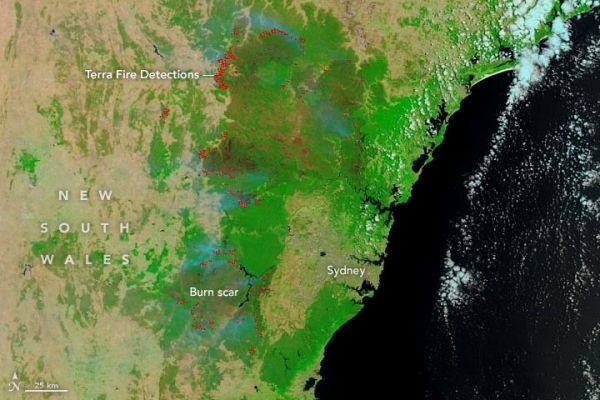Twenty years ago today, NASA began a new era in the study of Earth. The Terra satellite, flagship of the agency’s Earth Observing System (EOS), was launched into space from Vandenberg Air Force Base on December 18, 1999. It was built to last for six years and 30,000 orbits. It is still flying and taking data at the end of 2019.
The mission of Terra, and of the EOS program as a whole, was to make global simultaneous measurements of the atmosphere, land, biosphere, and oceans in order to understand how they interact and influence each other. The orbiting platform was a great leap for Earth system science—a new tool to observe how the spheres of Earth fit together as a whole, and how they change over days, months, and years.
About the size of a small school bus, Terra flies in a Sun-synchronous polar orbit that takes it from north to south on the daylit side of Earth (and south to north on the night side). The satellite carries five instruments that take coincident measurements; that is, they view the same swaths of Earth at the same time. This allows scientists to observe singular events or seasonal phenomena in different ways, discerning how one environmental signal might affect another.
Continue reading at NASA Earth Observatory
Image via NASA Earth Observatory


